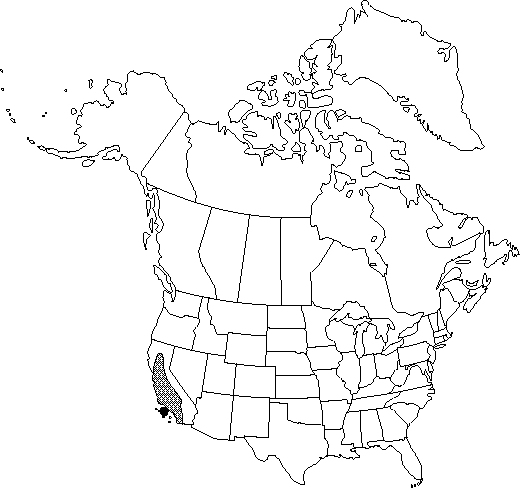Clematis lasiantha
in J. Torrey and A. Gray, Fl. N. Amer. 1: 9. 1838.
Stems scrambling to climbing, 3-4 m. Leaf-blade 3-foliolate; leaflets ovate, largest leaflets usually 3-lobed, 1.5-6 × 1.5-5 cm; terminal leaflet occasionally 3-cleft, margins usually toothed; surfaces glabrous or sparsely silky. Inflorescences axillary, flowers solitary, rarely 3-flowered cymes. Flowers unisexual; pedicel (including peduncle) stout, 3.5-11 cm; sepals widespreading, not recurved, white to cream, ovate or elliptic to obovate or oblanceolate, 10-21 mm, abaxially and adaxially pilose; stamens 50-100; filaments glabrous; staminodes absent or 50-100; pistils 75-100. Achenes asymmetric-ovate, not broadly orbiculate, 3-4 × 1.5-2 mm, not conspicuously rimmed, glabrous; beak 3.5-5.5 cm. 2n = 16.
Phenology: Flowering winter–spring (Jan–Jun).
Habitat: Chaparral, open woodlands
Elevation: 0-2000 m
Distribution

Calif., Mexico (Baja California)
Discussion
Clematis lasiantha is common in the Coast Ranges and the foothills of the Sierra Nevada of California.
The Shasta used pounded stems or chewed or burned roots of Clematis lasiantha medicinally in the treatment of colds (D. E. Moerman 1986).
Selected References
None.
Lower Taxa
"thin" is not a number.